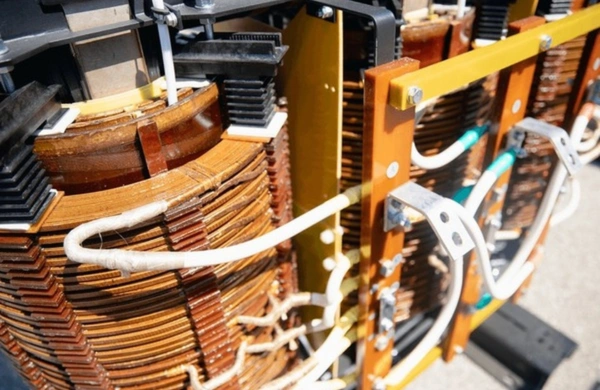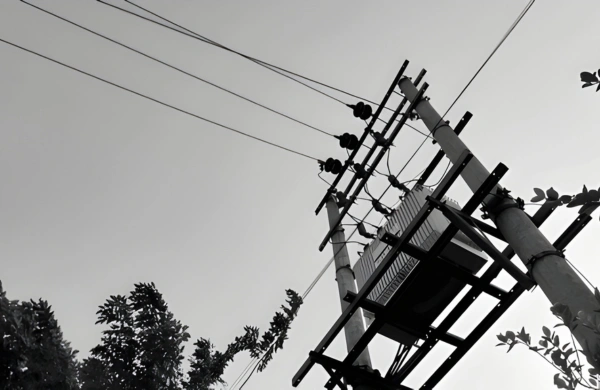Introduction
The transformation of the global power sector is being driven by electrification, renewable integration, and distributed energy systems. Central to this evolution is the Solid State Transformer (SST) — an advanced alternative to conventional transformers that combines power electronics, high-frequency conversion, and intelligent control.
Know About Solid State Transformers Driving Smart Grid
and EV Infrastructure
SSTs are enabling smarter, more efficient power distribution for electric vehicle (EV) charging stations, renewable energy systems, and smart grid networks. Unlike traditional transformers, SSTs can dynamically regulate voltage, support bidirectional power flow, and communicate with digital control systems in real time.
Zetwerk designs and manufactures solid state transformers that merge robust electrical design with digital control capabilities, enabling reliable performance across industrial, transportation, and utility-grade applications.
1. What Is a Solid State Transformer?
A solid state transformer is an intelligent power conversion device that uses semiconductor-based switching, high-frequency transformers, and control electronics to manage energy transfer.
While a conventional transformer relies solely on magnetic coupling, an SST integrates multiple conversion stages:
- AC–DC conversion
- High-frequency isolation via DC–DC converter
- DC–AC inversion
This modular structure allows precise voltage control, compact design, and advanced grid functionalities such as reactive power support and energy storage interface.
2. Key Advantages of Solid State Transformers
SSTs represent a leap forward in both electrical and functional performance, offering advantages over conventional oil-immersed or dry-type transformers.
Major benefits include:
- High power density: Operating at high frequencies significantly reduces size and weight.
- Bidirectional power flow: Supports distributed generation, storage, and EV-to-grid (V2G) applications.
- Voltage regulation: Real-time voltage and frequency control improve grid stability.
- Integration with renewables: Seamlessly connects solar PV, wind, and battery systems.
- Reduced losses: High-efficiency semiconductor switches minimize conversion losses.
- Digital control: Embedded microcontrollers enable monitoring, diagnostics, and predictive maintenance.
Zetwerk’s SSTs integrate power electronic converters with high-frequency transformers, achieving compactness, modularity, and system-level efficiency demanded by modern smart grids.
3. Core Design and Construction
Zetwerk’s solid state transformers are designed around three functional layers — power, control, and protection — integrated into a robust, compact enclosure.
a. Power Electronics Layer
- Utilizes IGBTs (Insulated Gate Bipolar Transistors) or SiC (Silicon Carbide) MOSFETs for high-efficiency switching.
- High-frequency transformers built with ferrite or nanocrystalline cores ensure isolation and voltage transfer.
- Advanced thermal management systems, including liquid or forced-air cooling, maintain stable operation under variable load.
b. Control Layer
- Equipped with DSP- or FPGA-based controllers for real-time voltage regulation and power quality management.
- Communication through Modbus, CAN, or Ethernet protocols enables grid integration and remote diagnostics.
c. Protection Layer
- Features surge arrestors, overcurrent protection, and isolation barriers ensuring operational safety and fault tolerance.
This multi-layered design provides the resilience and intelligence required for grid modernization.
4. Application Areas of Solid State Transformers
Solid state transformers are redefining power distribution in multiple sectors by enabling more flexible and efficient power control.
Key applications include:
- Electric vehicle (EV) charging infrastructure: Efficient DC conversion for ultra-fast chargers and bidirectional V2G systems.
- Renewable energy integration: Interface between solar inverters, storage systems, and grid networks.
- Railway traction systems: Lightweight, high-frequency transformers replacing bulky conventional units.
- Microgrids and data centers: Decentralized voltage management and improved power quality.
- Smart grids: Voltage balancing, load management, and fault isolation.
Zetwerk customizes SST configurations for power levels ranging from 100 kVA to several MVA, serving industrial, commercial, and utility-scale applications.
5. Design Innovation and Efficiency Optimization
SST efficiency depends on precise control of switching, conversion, and insulation systems. Zetwerk’s engineering process emphasizes innovation in each stage.
Efficiency and reliability improvements include:
- High-frequency operation (10–50 kHz): Reduces transformer core size and enhances dynamic control.
- Multilevel converter architecture: Minimizes harmonics and electromagnetic interference (EMI).
- Soft-switching techniques: Lower switching losses and component stress.
- Active cooling systems: Maintain consistent operating temperature across modules.
- EMI shielding and grounding: Ensure compliance with EMC standards for industrial installations.
Each SST is modeled and validated using electromagnetic transient simulation software to verify dynamic response under varying grid and load conditions.
6. Manufacturing Precision and Quality Assurance
Zetwerk’s SST production integrates advanced power electronics assembly, automated winding, and high-voltage testing to achieve repeatable quality.
Manufacturing process highlights:
- High-frequency transformer fabrication: Precision-wound ferrite cores with automated layering and vacuum impregnation.
- SMD-based control PCB assembly: Ensures compactness and reliability of control electronics.
- Thermal management validation: Infrared imaging and thermal cycling tests confirm temperature uniformity.
- Functional testing: Verifies DC link stability, converter synchronization, and communication response.
- Electrical type testing: Includes insulation resistance, impulse voltage, and high-frequency isolation validation.
Every SST is tested under rated load and dynamic conditions to verify performance, safety, and efficiency before dispatch.
7. Compliance, Standards, and Reliability
While solid state transformers are an emerging technology, Zetwerk ensures compliance with key global standards relevant to power conversion and grid interconnection.
Applicable standards include:
- IEEE C57.16 and IEC 60076-16 for power electronic transformers.
- IEC 61850 for communication and data exchange within substation networks.
- UL 1741 and IEEE 1547 for grid-tied energy systems.
- IEC 61000 for electromagnetic compatibility (EMC).
Reliability is validated through accelerated aging, vibration testing, and environmental simulations replicating thermal and electrical stress conditions. Each system undergoes extended burn-in testing to ensure long-term field stability.
8. Benefits for Smart Grid and EV Infrastructure
Zetwerk’s solid state transformers are engineered to support the modernization of North American power networks.
For Smart Grids:
- Enable dynamic voltage regulation and power flow management.
- Support distributed generation and fault isolation.
- Facilitate real-time monitoring and predictive diagnostics via IoT integration.
For EV Infrastructure:
- Provide bidirectional DC interface for fast chargers and V2G operation.
- Reduce transformer footprint in urban and roadside installations.
- Enhance power quality and voltage stability during rapid charging cycles.
By integrating digital control with high-efficiency conversion, Zetwerk’s SSTs help utilities and EV network operators achieve higher uptime, efficiency, and adaptability.
9. Zetwerk’s Engineering and Manufacturing Capabilities
Zetwerk combines high-voltage design expertise, electronics manufacturing, and transformer fabrication within a unified ecosystem — ensuring full control from prototype to production.
Capabilities include:
- Design and validation of SST systems from 100 kVA to multi-MVA.
- In-house power electronics assembly and transformer winding.
- High-voltage and high-frequency testing infrastructure.
- 3D electromagnetic modeling for efficiency optimization.
- ISO 9001, ISO 14001, and ISO 45001 certified manufacturing.
With a focus on innovation and reliability, Zetwerk supports global OEMs, utilities, and industrial clients in deploying next-generation grid technologies.
Conclusion
As the power sector transitions toward decentralized generation, EV integration, and digital control, solid state transformers are emerging as a cornerstone technology. They offer the flexibility, intelligence, and performance required for tomorrow’s electrical infrastructure.
Zetwerk manufactures solid state transformers that combine robust electrical engineering with advanced control systems, ensuring efficiency, safety, and adaptability. By bridging traditional transformer design with modern power electronics, Zetwerk enables North American utilities, EV network developers, and industrial operators to adopt smarter, cleaner, and more responsive power systems.




FAQs
a. A digitally controlled power transformer that uses semiconductor converters and high-frequency isolation for efficient voltage transformation.
a. EV charging, renewable integration, microgrids, smart grids, and railway traction systems.
a. Zetwerk SSTs achieve conversion efficiencies above 97% through optimized switching and thermal management.
a. They align with IEC 60076-16, IEEE C57.16, and UL 1741 for power electronics and grid connection.
a. Yes, Zetwerk provides tailored solutions for power range, voltage class, and application-specific requirements.








